Scottish hydrogen: assessment report
Examines how applications of hydrogen-based technologies in transport, industry, heat and whole system approaches can best be deployed in Scotland.
1. Introduction And Policy Context
1.1 Net-zero and a hydrogen pathway
The Scottish Government is committed to achieving net-zero by 2045[1]. To date, most of Scotland's emissions reductions have come from decarbonisation of electricity generation. Solutions to decarbonise heat, industry and transport are now growing priorities which will require a broader range of technologies, strategies and energy systems solutions.
There is broad consensus that hydrogen will play a critical role in decarbonisation of the energy system. Key policy and publications such as the Scottish Energy Strategy (2017)[2], Committee on Climate Change (CCC) Net Zero report (2019)[3,4] and National Grid ESO's Future Energy Scenarios (FES) 2020[5] have identified hydrogen as vital in decarbonising the energy system. Within these, hydrogen generally plays a role in decarbonising sectors where electrification is challenging.
Identifying the unique Scottish context and understanding hydrogen's role in decarbonisation is critical to informing the policy framework and interventions necessary to achieve Scotland's ambitious decarbonisation targets.
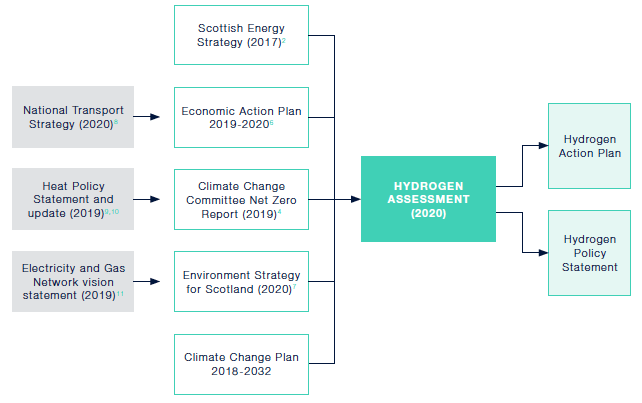
1.2 Scottish hydrogen assessment
This Scottish Hydrogen Assessment will inform the development of future Scottish Government decarbonisation policy. It will form an important part of the evidence base for the development of the Hydrogen Policy Statement and Hydrogen Action Plan committed to in the Programme for Government 2019-20[12].
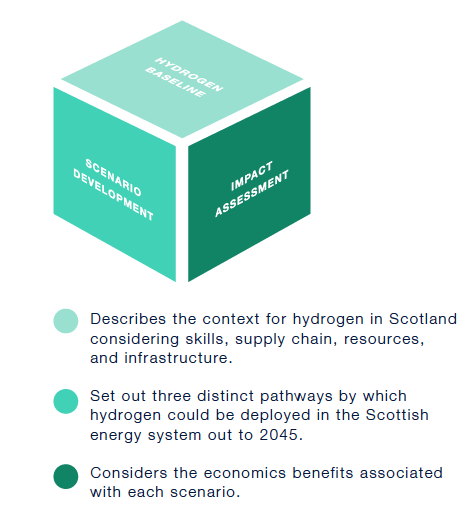
This assessment aims to investigate how and where hydrogen may fit within the evolving energy system technically, geographically and economically. To assist in this consideration, a key part of the Hydrogen Assessment is the development of distinct viable scenarios for hydrogen deployment in Scotland and the economic assessment of those scenarios.
1.3 Stakeholder engagement
The Hydrogen Assessment was supported by extensive stakeholder engagement focused on a selection of key organisations likely to be involved in the future hydrogen sector, both in Scotland and further afield.
This engagement was designed to gather thoughts and views on the options for hydrogen production, transportation and end use in Scotland. This fed into the design and development of the scenarios, through which these options could be fully explored (see Section 6 for the scenarios). Engagement was conducted over a number of months and set out in four phases.
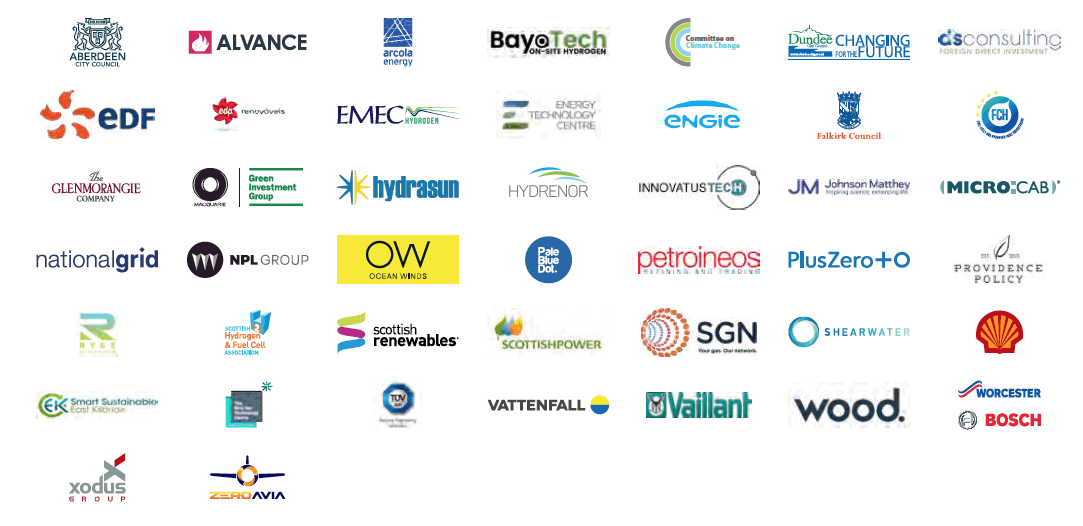
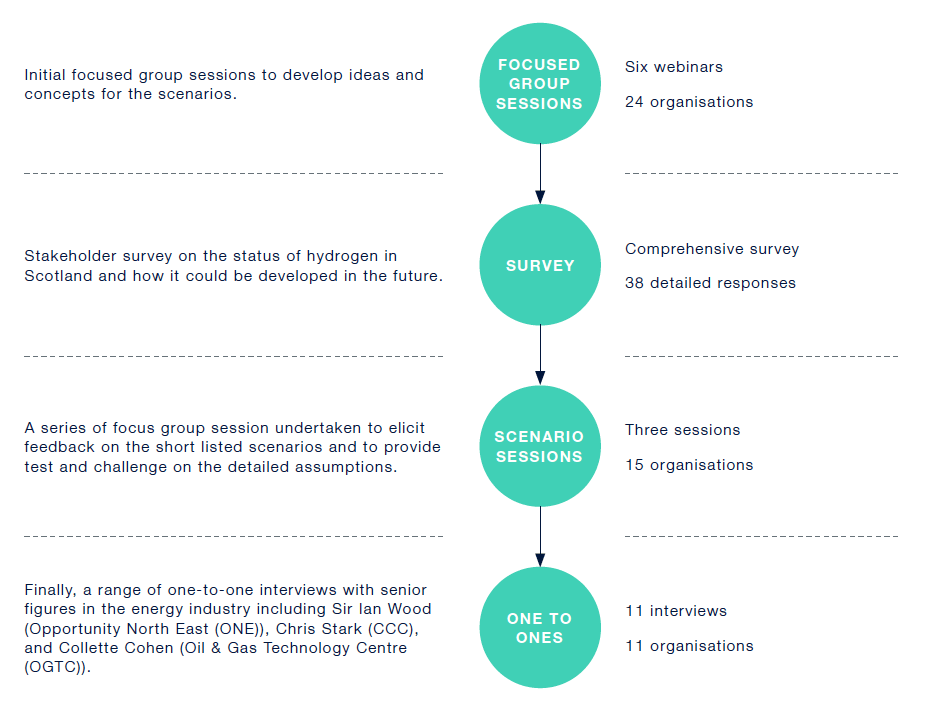
1.4 Hydrogen in the energy system
As the first element in the periodic table, hydrogen is the simplest, the lightest and the most abundant element in the universe. Hydrogen does not commonly exist in its pure form on Earth, and is typically found with other elements, for example, water (H2O). Hydrogen and carbons form hydrocarbons which we think of as fuels (e.g. methane CH4). To be used in the energy system hydrogen needs to be produced from other sources with water and methane being the most commonly used.
Hydrogen production and use within the energy system is not a new concept. The earliest forms of large scale production via electrolysis date back to the 1900s. Hydrogen was a key constituent of 'towns gas', which powered a significant amount of Scotland's heating and street lighting systems until the discovery of North Sea natural gas.
More recently, hydrogen has become of interest as a decarbonisation option as it emits no carbon dioxide at the point of use. It can support sectors where it is difficult to reach net-zero with just electricity. Hydrogen, like electricity, is considered an energy carrier i.e. it is produced to allow the storage and transfer of energy, rather than a primary source like natural gas, oil, coal etc. Hydrogen can be used widely across parts of the energy sector as seen in Table 1. Currently, the majority of these areas are served by carbon intensive fossil fuels.
"The key technologies required for hydrogen production are already available, however further development will reduce costs and improve performance"
Stakeholder questionnaire opinion
| Category | Description |
|---|---|
| Production | Grey hydrogen – hydrogen produced from reforming natural gas. This process produces both hydrogen and carbon dioxide. |
| Blue hydrogen – hydrogen produced from reforming natural gas, as for grey hydrogen. However, in this case around 95% of the carbon dioxide produced is captured and stored through Carbon Capture Utilisation and Storage (CCUS) technologies. Blue hydrogen could also be produced using biogas. This could potentially act as a carbon sink to offset sectors that cannot reach zero emissions. | |
| Green hydrogen – hydrogen produced by splitting water in an electrolyser powered from zero carbon sources. This process produces hydrogen and oxygen. No carbon dioxide is released. | |
| Transportation | Pipelines, hydrogen delivery vehicles or vessels. |
| Storage | Above ground or geological. |
| End usage | Including in transport, domestic & commercial heating, industrial heating & processes and power generation. These applications can be either fuel cell or direct combustion. |
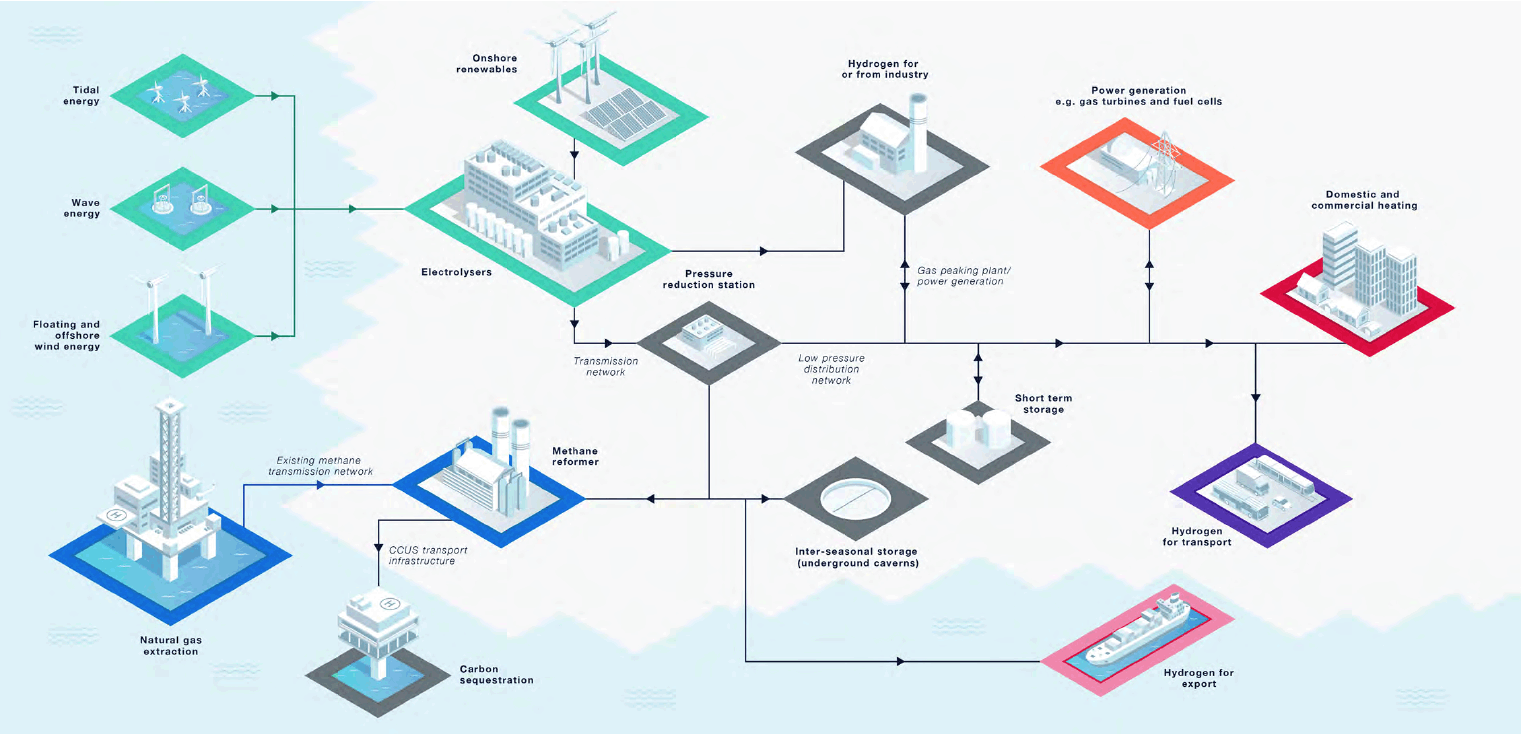
Contact
Email: onshoreoilandgas@gov.scot
There is a problem
Thanks for your feedback